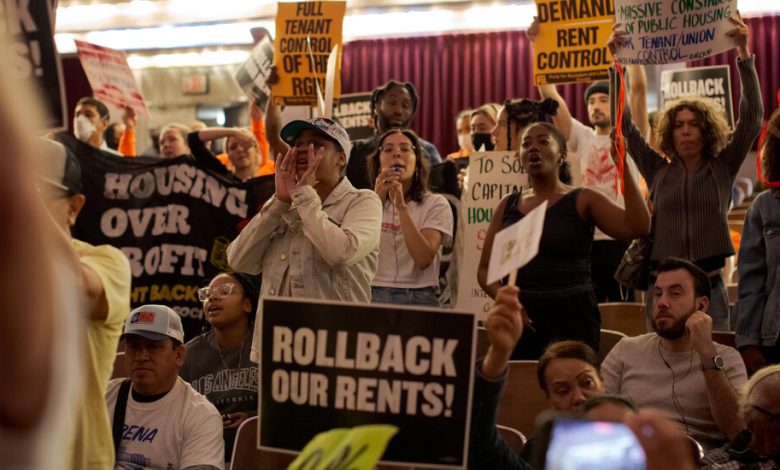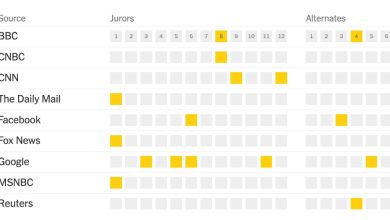New York City Has a Bold Plan to Fix Its Housing Crisis. Will It Work?

Last month, Mayor Eric Adams unveiled a big plan to tackle New York City’s housing shortage and make the city more affordable.
The plan, the city says, would make way for something on the order of 100,000 additional homes over the next 15 years, mainly through changes to the city’s zoning code.
While an ambitious target, it may not be enough to bring down rents or home prices: One report released this month by Up for Growth, a Washington policy and research group, estimated that the New York City metropolitan area was short nearly 340,000 homes as of 2021. And the need for housing — and in particular affordable housing — remains extremely high.
Still, the plan is among the biggest local efforts to address the shortage, and could have some significant effects across the city.
Upgrading basements and building up bodegas.
The plan is a combination of different strategies.
In high-density parts of the city — most of Manhattan, northwest Brooklyn, much of the Bronx and a few parts of Queens — the changes would let developers build even bigger buildings than currently allowed if they include a certain number of subsidized apartments, either for lower income people or people struggling with homelessness.
One component would also make it easier to build smaller apartments, like for single-room occupancy, that could be relatively cheap to rent.
Other parts of the plan would apply only in less crowded areas outside of Manhattan, where a hodgepodge of zoning rules often prevent the development of anything other than single- or two-family homes.
These changes, which could also increase the supply of lower-cost homes, include:
● Allowing the construction of two- to four-stories of apartments above laundromats, shops and other businesses along certain commercial strips;
● Allowing the construction of modest apartment buildings on big lots near subway, bus and other transit stations;
● And letting people who live in one- or two-family homes rent out basement units, garages and backyard cottages.
Following the lead of other cities, the plan also seeks to eliminate requirements that new developments include parking spaces for their tenants. Parking requirements are costly and use up space that could otherwise be used for homes.
The zoning changes also include Mr. Adams’s push, bolstered by the emptying of Manhattan offices during the pandemic, to convert older office buildings to residential.
The changes would also let institutions like churches, who might have swaths of undeveloped land, fill those areas in with housing.
What do people think about it?
For the most part, academics and other housing experts seem encouraged by the plan.
The Citizens Housing Planning Council, a nonprofit think tank, said “it will be important to get the details right. But you can only get the details right if you’re pointed in the right direction to start — and the city’s proposals are.”
The plan “would represent a step forward in addressing some of the deepest root causes of our city’s housing crisis,” said Baaba Halm, vice president and New York market leader for Enterprise Community Partners, a nonprofit housing developer. “We are particularly encouraged by the parts of the plan specifically focused on encouraging more affordable housing, which remains the most pressing need.”
But the changes will likely face some opposition. Already, at a public hearing in September, some residents expressed worries about the development of big buildings in their neighborhoods. Local officials and housing advocates have also become frustrated by the problems with city housing programs, like housing vouchers and the public housing system, which is not only deteriorating but also struggling to swiftly fill vacant apartments.
While supportive, Adrienne Adams, the City Council speaker, did not give a full endorsement of the plan, saying the Council looked forward to “continuing discussions with the administration and all stakeholders throughout this process.”
Will it work?
The plan must be passed by the City Council, and the earliest a vote is expected is in fall 2024. Until then, the administration will stump around the city trying to win the support of different neighborhoods and influential activists.
Even if it passes, there would still be significant hurdles. The plan presumes that the state will create a new tax incentive for big apartment buildings, after a previous tax break, the contentious program known as 421a, expired last year.
City officials concede the plan’s reach could be limited as new development has all but ground to a halt after 421a’s expiration. This means that if New York City remains an attractive place to live, the shortage might grow.
There is also the question of the 100,000 additional new homes. While officials admit that this number is a very rough estimate that is based in large part on educated guesswork.
Finally, it is far from certain that the plan will lower rents and home prices if the number of people who want to move here — a number that is impossible to quantify — is higher than what can be built in the near term.




